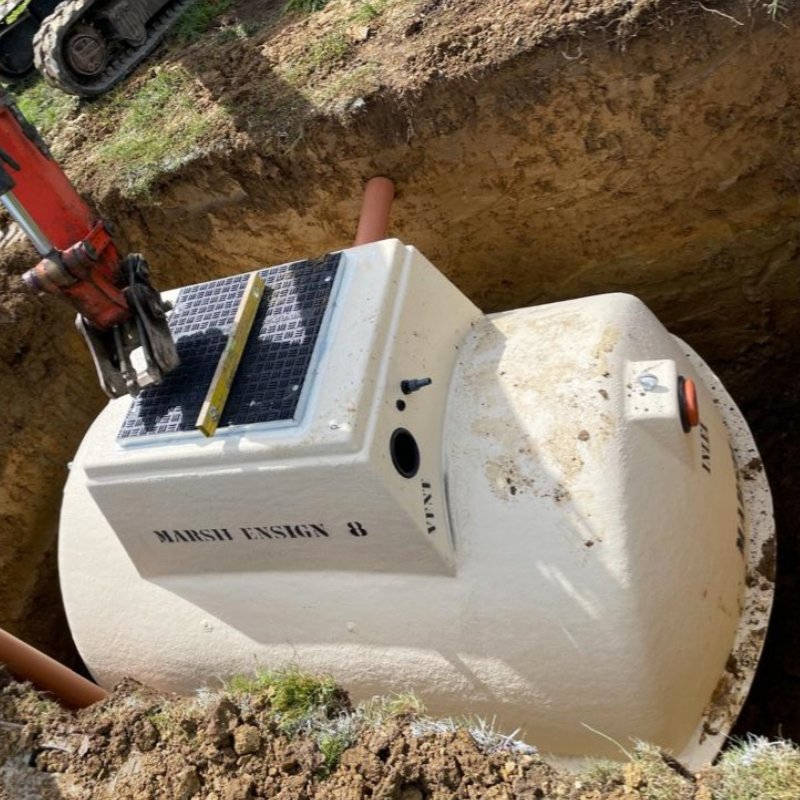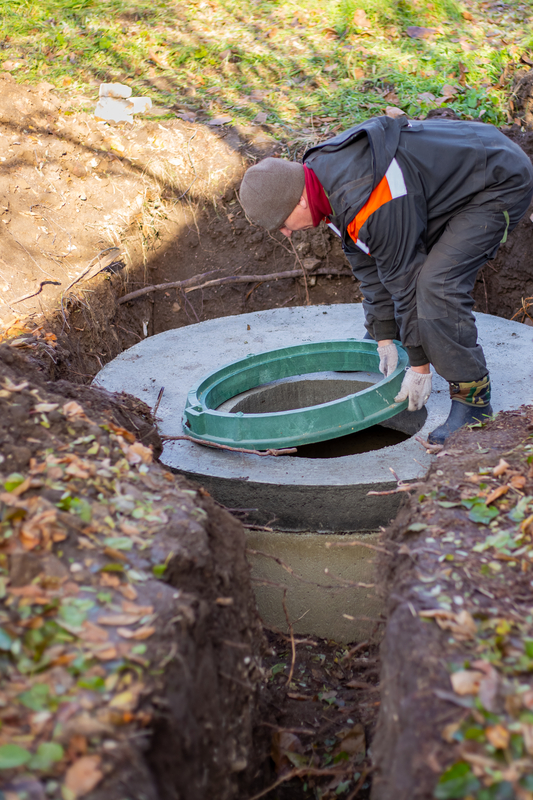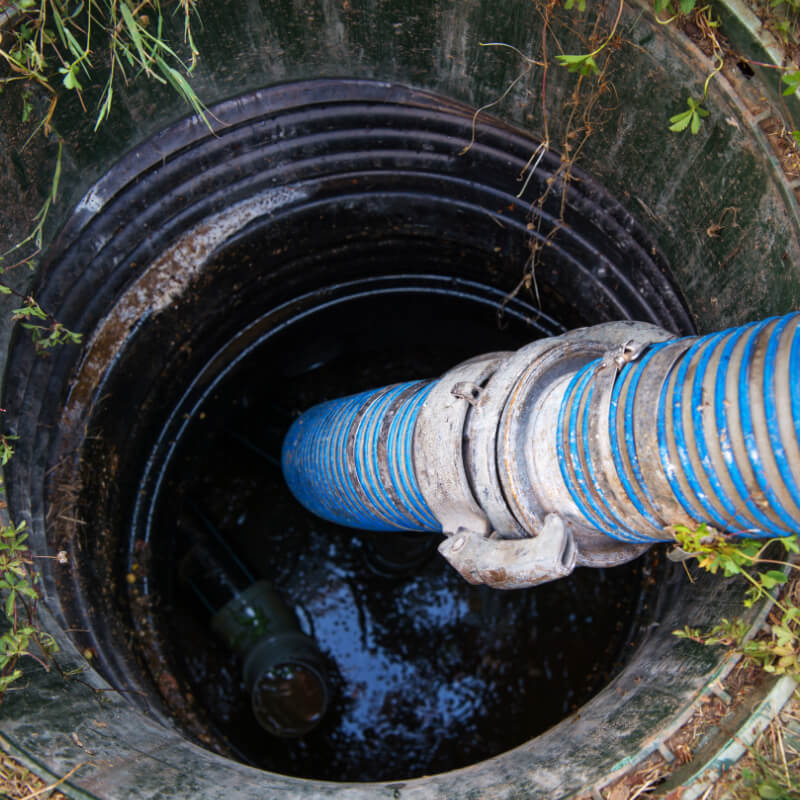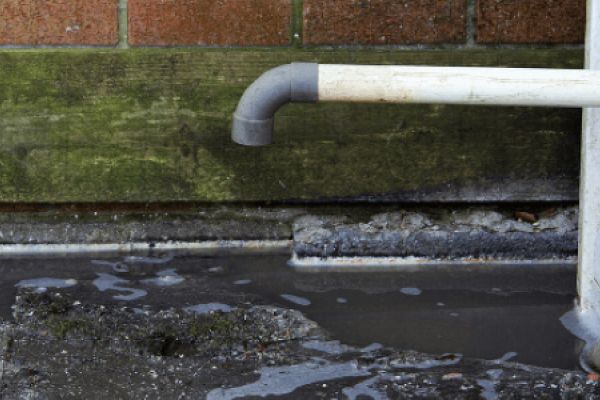In this article
Septic Tank Regulations - What do you need to know?
Septic tanks play a vital role in effectively treating and disposing of wastewater in areas where centralised sewer systems are unavailable. These decentralised systems are essential for rural homes, businesses, and properties that are not connected to a normal sewer line.
Understanding how these amazing drainage systems work is crucial for ensuring their proper functioning and minimising environmental impact. Compliance with regulations not only safeguards public health by preventing contamination of groundwater and surface water but also promotes sustainable wastewater management practices.
So, what do you need to know? In this blog, we will delve into the importance of septic tanks, how they work, how they adhere to septic tank regulations, and how these guidelines contribute to the longevity and efficiency of septic systems while protecting the environment for current and future generations.
Understanding Regulations and Maintenance
When it comes to septic tank installation, there are crucial regulations in place to govern the process and ensure compliance with environmental and health standards. These regulations typically cover various aspects of septic system installation, including tank sizing, location, material requirements, and drainage field specifications.
Adhering to local codes and regulations is paramount for several reasons. Firstly, compliance with these guidelines helps prevent potential health risks associated with improper wastewater treatment. By following regulations, property owners contribute to safeguarding both public health and the environment by reducing the risk of groundwater contamination and waterborne diseases.
Regulations not only focus on installation but also extend to the maintenance of septic systems. Regular maintenance, such as periodic inspections, pumping, and repairs, is essential for the proper functioning of septic tanks. By adhering to maintenance schedules and guidelines outlined in regulations, property owners can prolong the lifespan of their septic systems, minimise malfunctions, and avoid unexpected septic tank repairs.
Considerations Before Installing a Septic Tank
Installing septic tank systems is a complex process requiring careful planning, regulation adherence, and professional expertise. Before choosing to install a septic tank, it is important to understand the intrinsic routines and steps that contractors must take before they can approve your septic tank.
Site Evaluation:
A thorough site evaluation will need to be done to assess soil conditions, groundwater levels, and proximity to water sources. Understanding the site characteristics is crucial for your installers to determine the feasibility of installing a septic system and designing an effective setup.
Contractor Selection:
Choose a reputable and experienced septic system contractor to handle the installation process. Verify their credentials, check references, and ensure they are licensed and insured to perform the work. A skilled contractor can ensure the installation is done correctly and complies with regulations. Your chosen contractor will then be responsible for:
System Design:
Your contractor will have to meticulously design the correct septic tank for your home's needs. The design should consider factors such as household size, water usage, soil type, and local regulations to ensure optimal functionality and longevity of the system.
Tank Sizing and Location:
Proper sizing and placement of the sewage tanks are critical for efficient wastewater treatment and avoiding potential issues in the future.
Maintenance Planning:
Develop a maintenance plan for the septic system before installation. Understand the ongoing maintenance requirements, such as regular inspections, pumping schedules, and potential repairs. Being proactive about maintenance can extend the system's life and prevent costly issues down the line.
Inspection and Approval:
A final inspection is conducted by the local health department or regulatory authority to ensure compliance with regulations. Approval must be obtained before the system can be put into operation.
Permit Requirements:
Permits from the local health department or regulatory authorities before beginning installation. Compliance with permit regulations and the environmental protection agency is essential for a legal and hassle-free installation process.
Permit Process and Approval Requirements
A septic tank permit can vary depending on your location, with regulations typically set by county or local authorities. Obtaining the necessary permits ensures that the septic system installation complies with legal and environmental standards, protecting public health and groundwater quality.
It is crucial to check with your local health department or regulatory agency to understand the specific permit requirements for septic tank installation in your area.
What does the process look like?
The permit process for septic tank installation typically involves submitting detailed plans, obtaining regulatory approvals, and paying applicable fees. Homeowners should consult with the local health department or building department to understand the specific requirements for permit acquisition.
Approval requirements may vary depending on the property's location, size, soil conditions, and proximity to water sources. Accurate information during the permitting process is essential to expedite approval and ensure compliance with regulations.
Permits required for a septic tank installation typically include:
- Building Permit: Often required for any construction on your property, including the installation of a septic system.
- Septic Permit: Specific permit for installing a septic system, ensuring compliance with local health and environmental regulations.
- Health Department Approval: Health departments may need to approve the system design and location before installation.
- Environmental Permits: Depending on the area, you may need permits related to environmental impact assessments.
- Zoning Permit: Ensures compliance with local zoning laws regarding property use.
- Land Disturbance Permit: If significant land disturbance is involved during installation.
- Water Rights Permit: Necessary if a well is near the septic system.
- Electrical Permit: Required for any electrical work related to the system.
It's crucial to check with your local authorities and regulatory bodies to determine the specific permits needed for a septic tank installation in your area.
Role of Local Health Departments
Local health departments play a crucial role in overseeing the installation of septic systems to protect public health and the environment. This is so that they can:
- Review and approve septic system designs and installation plans.
- Conduct site evaluations to assess soil conditions and suitability for septic systems.
- Inspecting completed installations to ensure compliance with regulations and permit requirements.
- Provide guidance to homeowners on septic system maintenance and best practices.
Binding Rule Changes for Septic Tanks
Septic tank regulations underwent significant changes with the introduction of the General Binding Rules (GBR) for small sewage discharges in England in 2020. These rules apply to septic tanks and other small sewage treatment systems that discharge directly into surface water, such as rivers or streams.
- Prohibition of Discharges: The GBR prohibits the discharge of untreated sewage effluent from septic tanks directly into surface water to protect water quality and the environment.
- Upgrading or Replacement Requirement: Property owners with existing septic tanks that discharge into surface water must either upgrade their systems to meet the required standards or replace them with a compliant sewage treatment solution.
- Exemptions and Deadlines: Some exemptions apply to certain properties based on factors like site characteristics and proximity to water bodies. Property owners have specific deadlines to ensure compliance with the regulations.
- Maintenance and Monitoring Obligations: Property owners are responsible for maintaining their septic tanks in good working order, conducting regular inspections, and keeping records of maintenance activities.
- Environmental Impact Consideration: The regulations aim to reduce the environmental impact of sewage discharges, protect water quality, and promote sustainable wastewater management practices.
It is important to understand and comply with the General Binding Rules to avoid penalties, protect the environment, and ensure the efficient operation of your sewage treatment systems. More on the General Binding rules can be found on theGOV website.
Preventative Maintenance Tips for Septic Systems
Proper preventative maintenance is critical to preserving the functionality and longevity of your septic system. By proactively caring for your system, you can prevent costly repairs, ensure efficient wastewater treatment, and extend the lifespan of your septic tank. Here are some essential tips for you to maintain your septic systems effectively:
- Regular Inspections: Schedule regular inspections by a professional septic service provider to assess the condition of your system, identify any issues early on, and address them promptly.
- Pumping Schedule: Follow a routine pumping schedule recommended by experts based on your household size and tank capacity. Regular pumping prevents solid buildup in the tank and maintains optimal system performance.
- Water Conservation: Practice water conservation habits to reduce strain on your septic system. Fix leaks promptly, use high-efficiency fixtures, and spread out water usage throughout the day to prevent overload.
- Proper Waste Disposal: Avoid flushing non-biodegradable items, grease, chemicals, and other harmful substances down the drain. These can clog the system, disrupt the bacterial balance, and lead to system failure.
- Landscaping Considerations: Be mindful of landscaping near the septic system. Avoid planting trees or shrubs with deep roots near the septic tank or drain field to prevent root intrusion and damage to the system.
- Avoid Heavy Loads: Minimise heavy machinery or vehicle traffic over the drain field to prevent soil compaction and pipe damage. This can compromise the system's ability to absorb and treat wastewater efficiently.
- Educate Household Members: Inform all household members about the dos and don'ts of septic system care. Encourage responsible water usage practices and proper waste disposal habits to maintain the system's health.
Preventative Maintenance and Regulatory Compliance
While preventative maintenance focuses on proactive measures to preserve the functionality of a septic system, regulatory compliance pertains to meeting legal and environmental requirements set by authorities. Here's how they differ:
- Preventative Maintenance: Involves actions taken by homeowners to prevent system failures, such as inspections, pumping, water conservation, and proper waste disposal. It aims to enhance system efficiency and longevity.
- Regulatory Compliance: Refers to adhering to local regulations, permit conditions, and environmental guidelines related to septic system installation, operation, and maintenance. It ensures that the system meets legal standards for public health and environmental protection.
Factors that Determine the Septic Tank You Need
- Household Size: The number of occupants in the household directly influences the amount of wastewater generated daily. Larger households require a bigger septic tank to accommodate increased wastewater flow.
- Water Usage: The volume of water used in daily activities, such as laundry, bathing, and dishwashing, impacts the load on the septic system. Higher water usage necessitates a larger tank size to handle the wastewater effectively.
- Bedroom Count: Some regulations base tank size requirements on the number of bedrooms in the house, assuming a correlation between bedrooms and household size.
- Soil Percolation Rate: The soil's ability to absorb and treat effluent, known as the percolation rate, influences the necessary tank size. Slower percolation rates may require larger tanks to allow for sufficient retention time.
- Local Regulations: State, county, and city regulations specify minimum tank sizes based on household size, water usage, soil type, and environmental considerations. Compliance with these guidelines is essential for legal installation and operation.
Caring for Your Septic System
Maintaining your shallow dig septic tank system is essential for ensuring its longevity, efficiency, and environmental impact. Proper care and maintenance preserve the system's functionality and protect public health and groundwater quality. Here's why caring for your septic system is crucial, along with practical tips to ensure its optimal performance:
Importance of Proper Care and Maintenance:
- Prevent System Failures: Regular maintenance helps prevent system failures, backups, and costly repairs, ensuring continuous wastewater treatment.
- Protect Public Health: Properly treated wastewater prevents the spread of waterborne diseases and protects the health of residents and communities.
- Preserve Environment: By maintaining a well-functioning septic system, you contribute to protecting groundwater quality, surface water bodies, and the surrounding ecosystem.
Practices to Avoid for Healthy Septic Systems:
- Avoid Flushing Harmful Substances: Refrain from flushing non-biodegradable items, chemicals, grease, medications, and other harmful substances down the drain to prevent system clogs and damage.
- Limit Water Usage: Practice water conservation habits to prevent system overload and maintain proper wastewater treatment levels.
- Mindful Landscaping: Avoid planting deep-rooted trees or shrubs near the septic system to prevent root intrusion and damage to pipes.
Tips for Ensuring Efficiency and Longevity for sewage treatment plants:
- Schedule Regular Inspections: Conduct routine inspections by professionals to identify issues early and address them promptly.
- Follow Pumping Schedule: Adhere to a recommended pumping schedule to empty your septic tank regularly and prevent solid buildup in the tank and maintain system functionality.
- Educate Household Members: Inform all residents about proper system care, water conservation practices, and waste disposal guidelines to ensure collective responsibility.
Final Thoughts
Educating yourself about proper septic system care is vital. Staying informed about best practices and seeking professional advice can help you make informed decisions and take appropriate actions to care for your system.
By incorporating these best practices into your routine, you can ensure your septic system's efficiency, reliability, and longevity. If you'd like to learn more about septic tanks and how they work, please visit our blog page here.
Contact us today to learn about our sewage treatment plant options - from shallow dig septic tanks,drainage field repairs, and drain unblocking. Our team is here to help you achieve a reliable septic tank and efficient drainage systems for your domestic sewage to help you and your family.
Get in touch
Contact our friendly and professional team via form, phone or email for any drainage issues you may have.
From blocked drains to septic tank repairs and replacements, we're here to help. We have over 25 years of experience and offer 24/7 emergency callouts.
-
01386 882324
-
WhatsApp
-
This email address is being protected from spambots. You need JavaScript enabled to view it. -
See what our customers think









